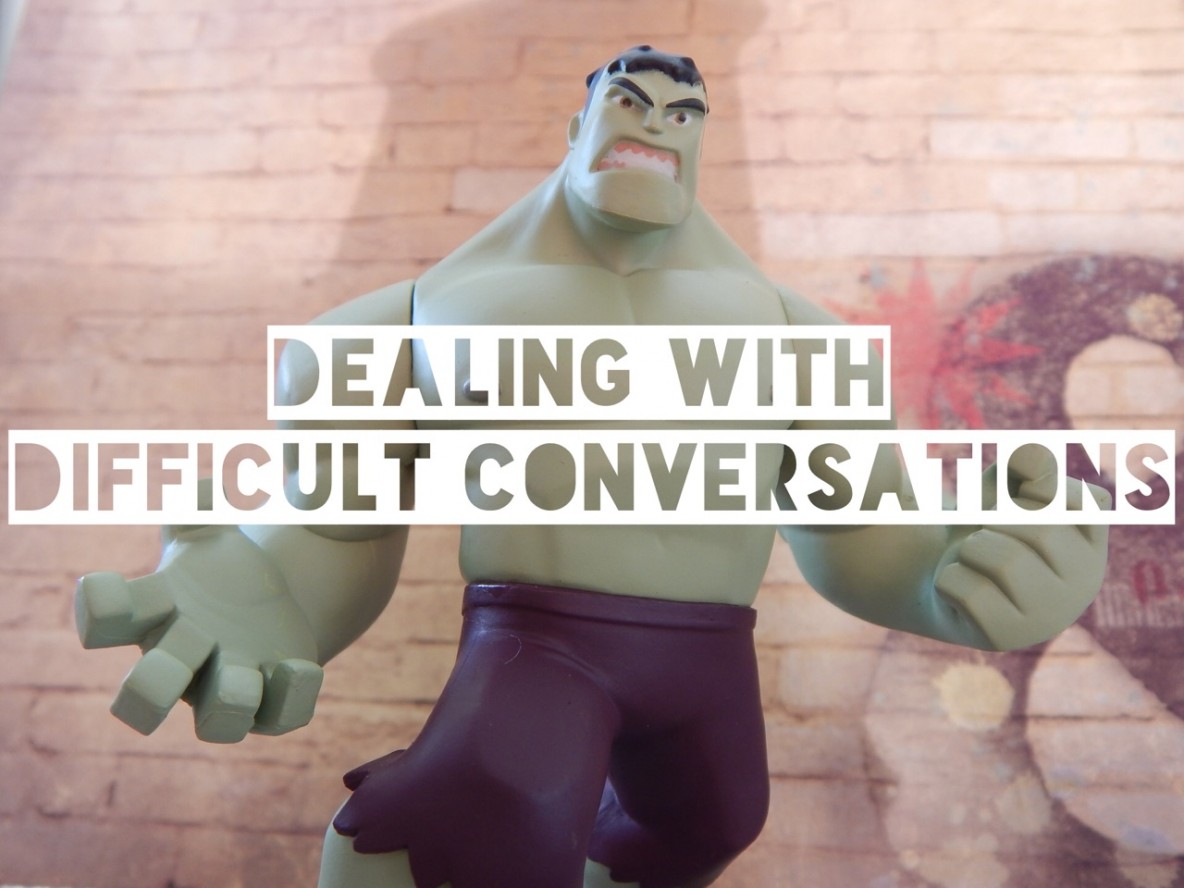
It is true that honesty is always the best policy but how you deliver that feedback and have that conversation is something which can turn that conversation in to a win or a massive lose. Delivering bad news is never easy but these frank and honest conversations are an important part of any learning culture. I often say that for me, every day is a learning day. A day where I don’t learn something new is a pretty poor day for me, so how can we have conversations with colleagues, students or parents that can lead to something truly formative that helps improve a situation, develops learning or improves capability?
In my career I’ve worked with some leaders who start these conversations by being about as subtle as a brick to the face. We’ve all met these types. Often referred to in the workplace as bullies, they’re the type who are often singularly focused, sometimes misguided and in general terms, aren’t well liked by colleagues. On the flip side, some of my most formative development has been delivered by someone who has the most highly developed sense of emotional intelligence and empathy I’ve had the pleasure to work with (thanks Zoë Elder). Sustaining positive relationships between you and the person you’re interacting with is crucial. You need to work with the person you’re talking with after the conversation even if you are having a conversation as difficult as one linked to capability. Sustaining respect for each other is important too – I’ve learned that burning bridges is of no use whatsoever. People are people and deserve respect from you, even if you don’t always get it back.
So how do you get to the point in time where you can tease out the conversation that you need to have?
Well, skirting around the issue isn’t going to get to the heart of the matter, for sure, but is a direct approach the best thing to do? Before you go in to the conversation here are a few questions you might like to ask yourself to help shape how it goes and some tips to go along with it.
What is the purpose of the conversation?
Determine and write down the ideal outcome you would like to achieve. This will help you to enter the conversation with a clear purpose.
What might the person be thinking?
It’s vital that you consider the other person. Are they fully aware of the problem? What might be an ideal outcome from their perspective? Think about some of the questions you could ask to find out about the issue from the other person’s perspective.
Do you have an emotional attachment?
Consider whether you have an emotional attachment to the situation. If you do, perhaps think about how you could make your position neutral, or if impossible, why not bring in a neutral colleague to help mediate it?
Positive outcomes
Many times you will want the conversation to end with a positive outcome. Think carefully before the conversation about what that outcome will be. If the person you are having the conversation with leaves feeling hopeful about the future, it will help both you and them to work together in the future, being mindful of the conversation you’ve had. A positive emotional outcome at the end of the conversation will help steer the conversation while taking on board their points of view and perspectives.
Don’t avoid the conversation
The longer you leave it the worse it gets. I often mention Hattie’s comment in Visible Learning for Teachers, 2012, about making sure that feedback is “just in time, just for me, just for where I am in my learning process, just what I need to help me move forward” – having this mantra so that perspectives are fresh in the minds of those you are working with can be very helpful. Some types of people do need slightly longer than others to process experiences, this is true, but that shouldn’t mean you should shy away from the conversation; just make sure it happens in a timely fashion. It won’t help you or the other person if you leave it for a week.
Praise in public, criticise in private
Don’t make that rookie error of having a difficult conversation in public. A quick flippant comment can put a massive dent in your relationship with someone. If it’s a comment which is important enough to make, then make it better, don’t make it worse. I remember a senior leader once asking me to pull my tie up in front of a load of students. You can imagine I wasn’t best pleased! The comment may have been valid, but where and when should that comment have been made?
Deliver bad news in person
Don’t email it, whatever you do. If it is a topic worthy of a conversation, have that conversation – even if brevity is required, arrange for a short meeting. Go and see that person. Don’t do it in the corridor either. And on the topic of corridor conversations, this post of mine reminds us of the importance of keeping a record of corridor conversations and meetings.
Enjoy the silence
Ok, so this might be one of my favourite Depeche Mode tracks, but silence in a difficult conversation is an important time for the other person to reflect. Don’t feel the need to fill the time with filler – let the other person process the information you’ve given them. Wait for them to speak. If it’s getting really uncomfortable then sure, interject – but these are difficult conversations. You’re not having a laugh. If it is going on too long ask a simple question – don’t probe and go in all guns blazing;
- Are you ok?
- What do you think?
- What do you think our next steps are?
- Do you need me to do anything?
Inquiry
Gather information from the person you are speaking with. Get their perspective. Let them talk until they’re finished. Don’t interrupt other than to acknowledge what they are saying. Don’t respond until they have finished. Show emotional and empathetic intelligence through your listening skills and body language.
Don’t mirror
Sometimes with these kinds of conversations, the other person can become upset, angry, shout, or raise their voice – do not mirror the emotions of the person you are talking with. Remain calm. Breathe. Count to ten if you need to. One very influential head teacher that I have mentioned on my blog before, John Wells, always talked about positive relationships and mutual respect. You can see that as a theme running through this post. Maintain that. Have integrity. Have diplomacy. Have dignity. Show these to the person you are speaking with. You will have to continue working with them and being in a place where you have behaved in this way is not a good place to be.
Get the outcome
Difficult conversations are difficult by nature. Given that they are uneasy situations, don’t rush the conversation. Make sure that all of the relevant points you needed to go through and that the outcomes that are required are covered. We are all time-poor, but your careful management of the conversation will reap benefits if you ensure that the required outcomes are discussed, agreed and confirmed. Clarify these if needed. Ensure acknowledgement although you might not have acceptance.
Unconditional positive regard
Dave Whitaker talks about this and Crista Hazell has written about it further. I believe that this should echo not just for the students and the parents but colleagues and staff too. Even if you feel that they may have acted unprofessionally or aren’t pulling their weight. People are people and deserve respect. Show this. It is a mark of you as a leader that you can act with integrity and honour. Even if in the most heinous of situations, it is not our role to cast judgement – that would be down to powers much higher than ours. Do what you do best.
Wrap it up
People sometimes mention giving bad news like a sandwich – good news, bad news, good news. This works for some people. Either way, try and make it so that from the discussion you have had; that emotionally positive outcome you wanted when you went into the meeting, is what is experienced at the end.
Do you have any tips for how to work on conversations or other places to look for help and support? If so, I’d love to hear from you and I hope you’ve found my thoughts helpful. I’d love to hear from you in the comments too.

















Difficult conversations are never easy but its not about being personal, it’s about making people aware of how we can make things better and doing things for the children. Keeping a positive outlook and remembering you are doing your job helps too. I definitely employ the sandwich technique and like to leave things on a positive note.
Lots of good advice here, Mark – thanks for sharing it.
I’d also add to be very well-prepared. Get your facts straight and make sure you’re clear about the background and the context. This will help you to keep on track if the person you’re talking to is (for their own protection) deep in the pit of denial….
You will never enjoy these conversations – you SHOULDN’T enjoy these conversations – but if you’re a responsible leader you will see that they come with the territory. Work through them so that both you and the person you’re talking to are in a better place as a result.